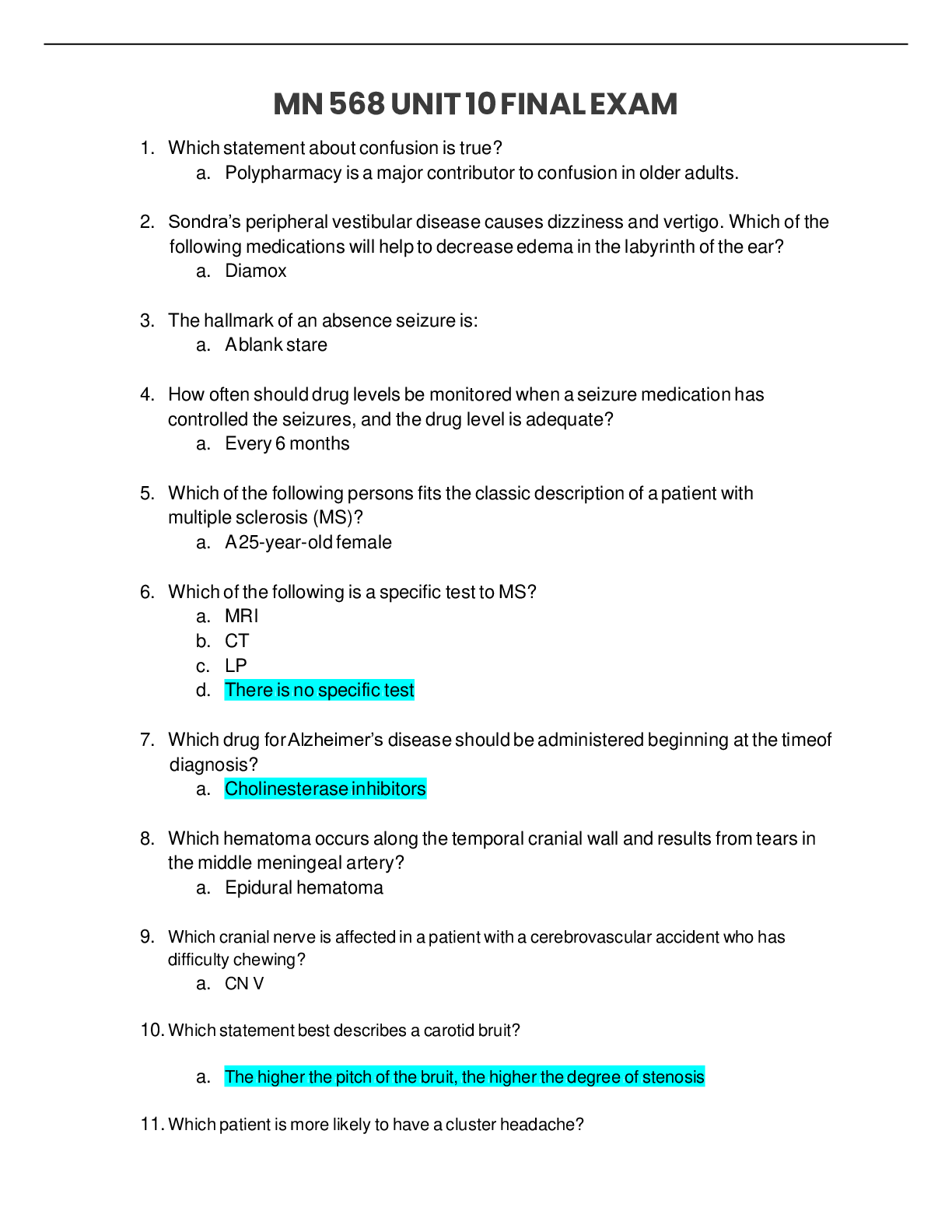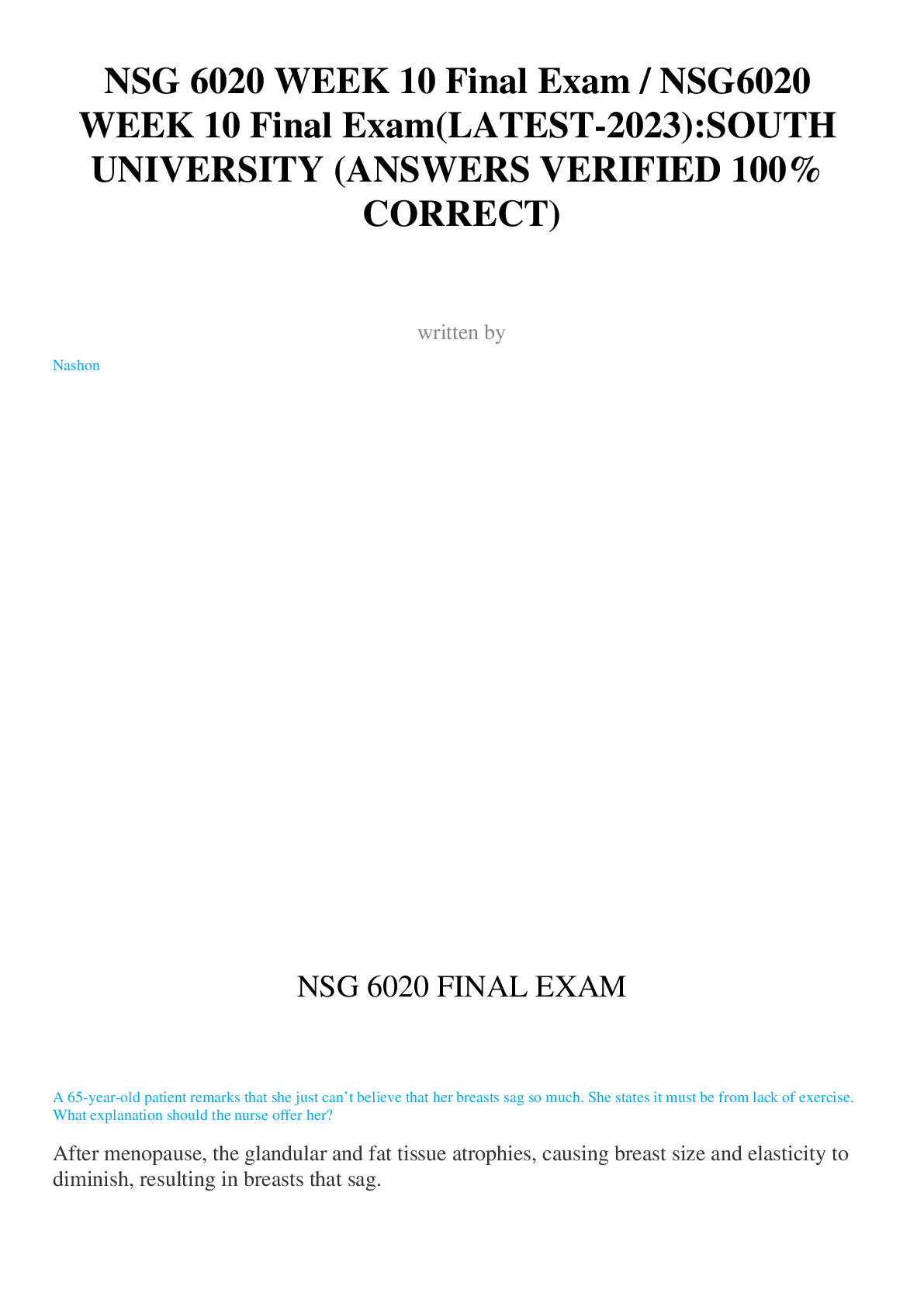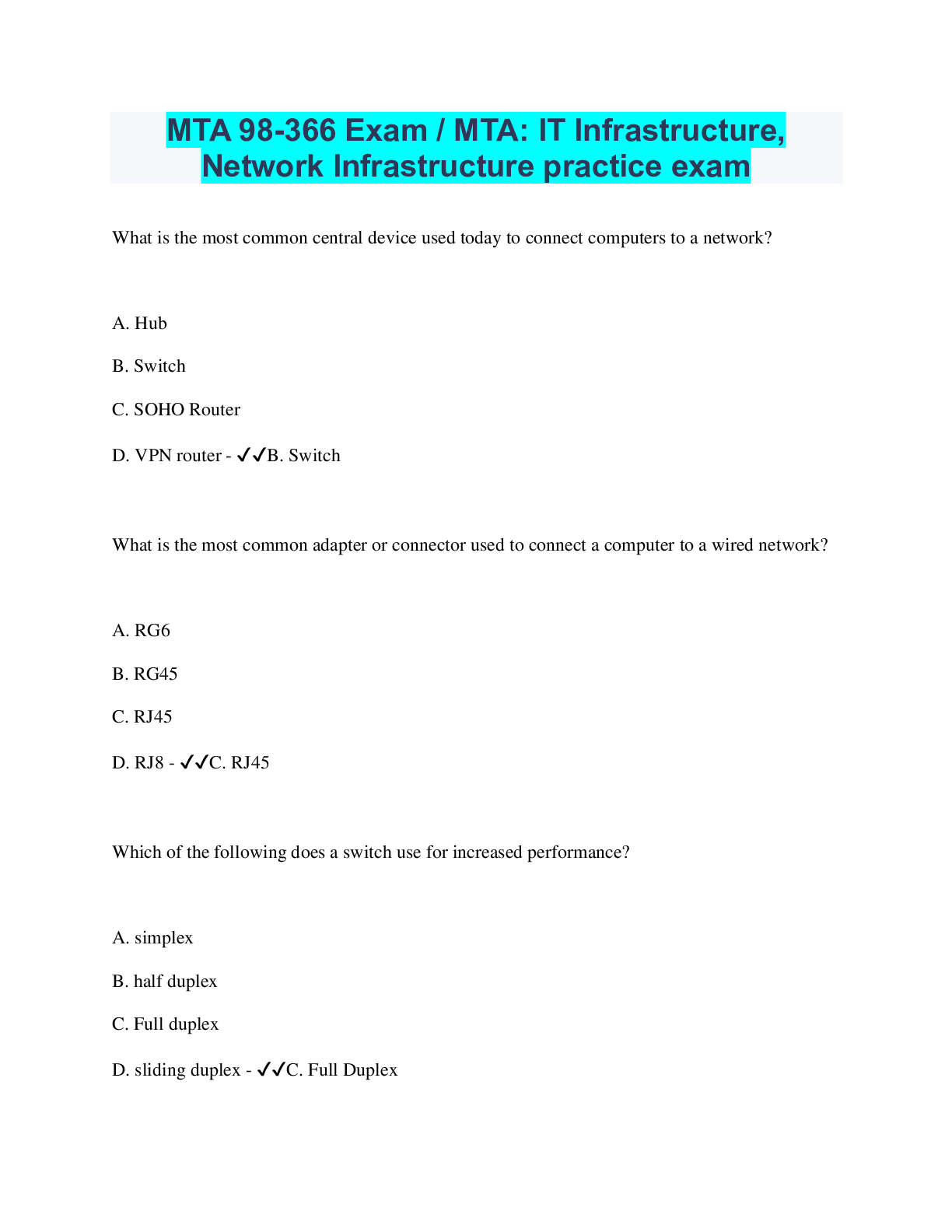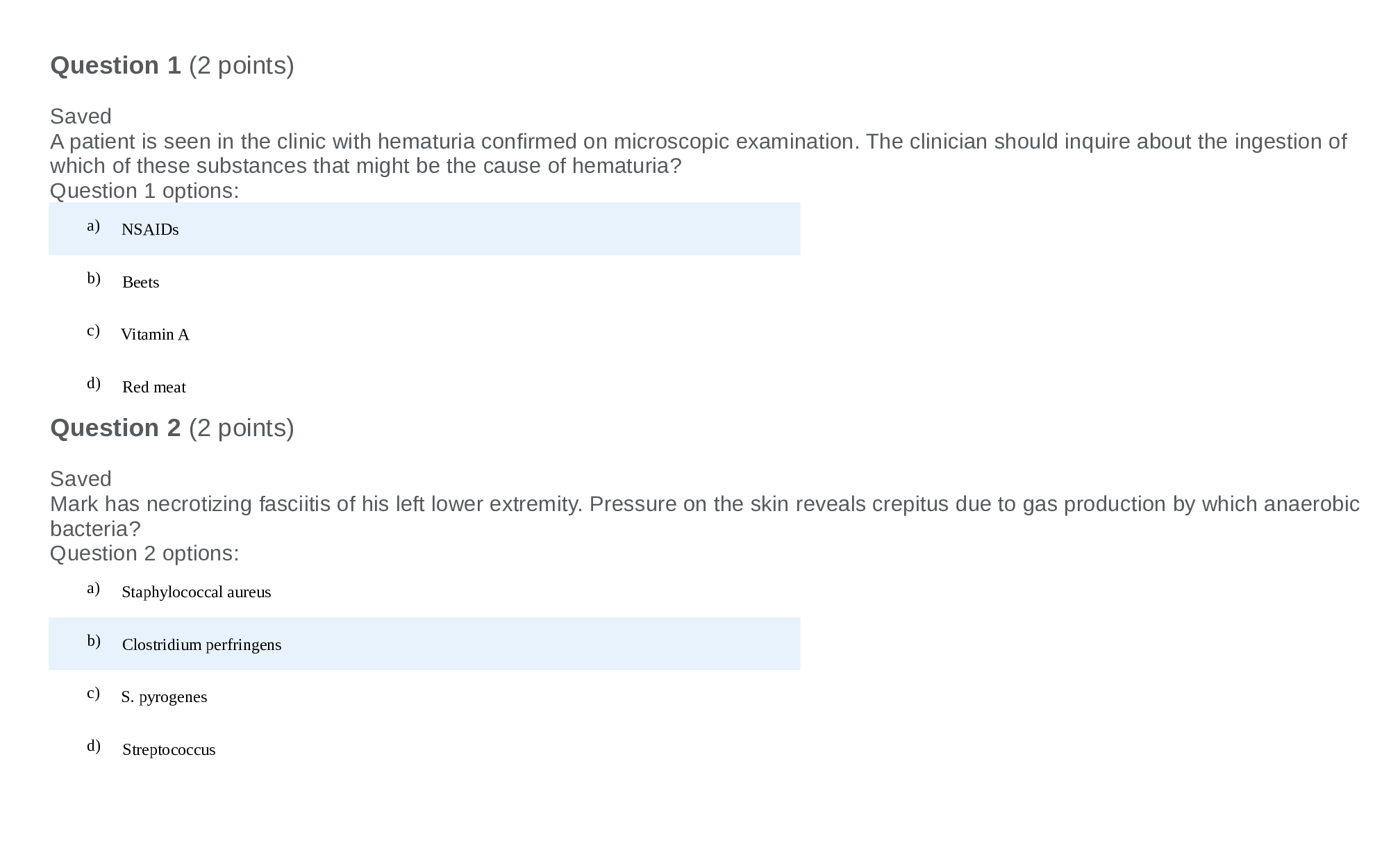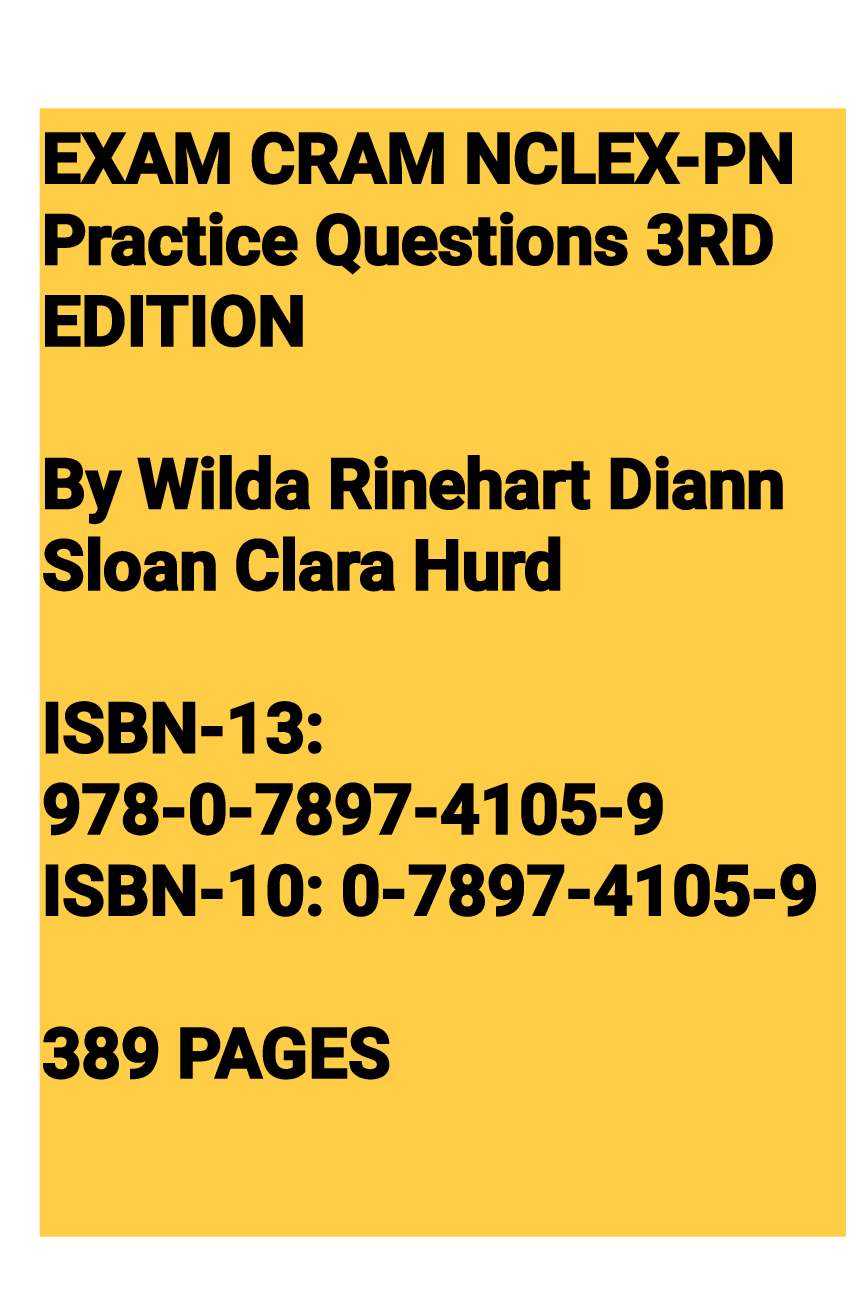*NURSING > EXAM > MN568 Unit 6 Exam / MN 568 Unit 6 Exam: Kaplan University (ANSWERS VERIFIED ALL CORRECT) (All)
MN568 Unit 6 Exam / MN 568 Unit 6 Exam: Kaplan University (ANSWERS VERIFIED ALL CORRECT)
Document Content and Description Below
MN568 UNIT 6 EXAM Random Section 1 Question 1 2 / 2 points A patient is seen in the clinic with hematuria confirmed on microscopic examination. The clinician should inquire about the inges... tion of which of these substances that might be the cause of hematuria? Question options: a) NSAIDs b) Beets c) Vitamin A d) Red meat Question 2 2 / 2 points Mark has necrotizing fasciitis of his left lower extremity. Pressure on the skin reveals crepitus due to gas production by which anaerobic bacteria? Question options: a) Staphylococcal aureus b) Clostridium perfringens c) S. pyrogenes d) Streptococcus Question 3 2 / 2 points Which of the following is “a linear crack extending from the epidermis to the dermis?” Question options: a) An ulcer b) A fissure c) Lichenification d) An excoriation Question 4 2 / 2 points The patient is diagnosed with ARF. Which of the following conditions is the most common cause? Question options: a) Renal calculi b) Acute tubular necrosis c) Cardiac failure d) Acute glomerulonephritis Question 5 2 / 2 points A 14-year-old male is seen with complaints of severe testicular pain. The clinician suspects testicular torsion. Which of the following is the appropriate action? Question options: a) Refer to a urologist immediately. b) Obtain a computed tomography (CT) scan. c) Instruct the patient to elevate the scrotum. d) Prescribe ibuprofen. Question 6 2 / 2 points Which scalp problem can be caused by a fever and certain drugs? Question options: a) Telogen effluvium (TE) b) Trichotillomania c) Psoriasis d) Alopecia areata Question 7 2 / 2 points A 46-year-old man presents with urinary hesitancy and low back pain. He has no history of UTI. Digital rectal examination (DRE) reveals a normal prostate, and a diagnosis of prostatodynia is made. Which is the appropriate treatment? Question options: a) Terazosin 2 mg PO once a day b) Ice pack to the scrotal area c) Saw palmetto 320 mg per day d) All of the above Question 8 2 / 2 points The most common precancerous skin lesion found in Caucasians is: Question options: a) A skin tag b) Actinic keratosis c) A melanoma d) A basal cell lesion Question 9 2 / 2 points A 27-year-old female presents with a chief complaint of burning and pain on urination. She has no previous history of urinary tract infection (UTI). What are some additional symptoms consistent with a diagnosis of lower UTI? Question options: a) Back and abdominal pain b) Fever, chills, costovertebral angle (CVA) tenderness c) Blood in urine and frequency d) Foul-smelling discharge, perineal itch Question 10 0 / 2 points Which is the most potent and irritating dose of tretinoin? Question options: a) 0.05% liquid formulation b) 0.1% cream c) 1% foam d) 0.02% cream Question 11 2 / 2 points Prevalence of psoriasis is highest in which group? Question options: a) Scandinavians b) African Americans c) Asians d) Native Americans Question 12 2 / 2 points A patient is seen with a sudden onset of flank pain accompanied by nausea, vomiting, and diaphoresis. In addition to nephrolithiasis, which of the following should be added to the list of differential diagnoses? Question options: a) Pancreatitis b) Peptic ulcer disease c) Diverticulitis d) All of the above Question 13 2 / 2 points Simon presents with alopecia areata with well-circumscribed patches of hair loss on the crown of his head. How do you respond when he asks you the cause? Question options: a) “You must be under a lot of stress lately.” b) “It is hereditary. Did your father experience this also?” c) “The cause is unknown, but we suspect it is due to an immunologic mechanism.” d) “We’ll have to do some tests.” Question 14 2 / 2 points Which of the following is an infraorbital fold skin manifestation in a patient with atopic dermatitis? Question options: a) Keratosis pilaris b) Dennie’s sign c) Keratoconus d) Pityriasis alba Question 15 2 / 2 points An example of ecchymosis is: Question options: a) A hematoma b) A keloid c) A bruise d) A patch Question 16 2 / 2 points Harvey has a rubbery, smooth, round mass on his chest that is compressible and has a soft-to-very-firm texture. What do you diagnose this as? Question options: a) A lipoma b) A nevi c) A skin tag d) A possible adenoma Question 17 2 / 2 points When instructing your elderly client about treating her xerosis, what do you tell her? Question options: a) A daily hot bath may help the associated pruritus. b) Rub the skin briskly to make sure it is completely dry after bathing. c) Only take short tepid showers. d) Use a gel that is alcohol-based after bathing to soften the skin. Question 18 2 / 2 points A 23-year-old sexually active man is seen in the clinic with unilateral painful testicular swelling, and he is diagnosed with epididymitis. In order to prescribe the correct drug, the clinician must understand that which of these is the most common causative organism? Question options: a) Escherichia coli b) Staphylococcus aureus c) Chlamydia trachomatis d) Pseudomonas aeruginosa Question 19 2 / 2 points Which of the following instructions should be given to the patient with nephrolithiasis? Question options: a) Take ibuprofen, 600 mg every 8 hours. b) Take Tums for stomach upset. c) Drink more black tea. d) Increase intake of vegetables, like spinach. Question 20 2 / 2 points A 60-year-old man presents with an enlarged scrotum. The clinician uses a penlight to transilluminate the scrotum. In a patient with a hydrocele, what would the clinician expect to find? Question options: a) The scrotum will be dark. b) The scrotum will appear light pink or yellow. c) The scrotum will appear milky white. d) The internal structures will be clearly visible. Question 21 2 / 2 points Sally, age 25, presents with impetigo that has been diagnosed as infected with Staphylococcus. The clinical presentation is pruritic tender, red vesicles surrounded by erythema with a rash that is ulcerating. Her recent treatment has not been adequate. Which type of impetigo is this? Question options: a) Bullous impetigo b) Staphylococcal scalded skin syndrome (SSSS) c) Nonbullous impetigo d) Ecthyma Question 22 2 / 2 points Why do people of African descent have a lower incidence of non-melanoma skin cancer? Question options: a) They have an increased number of melanocytes. b) Their darker skin protects from ultraviolet radiation. c) Their skin is thicker. d) Their immune system is stronger. Question 23 2 / 2 points The 56-year-old man with chronic prostatitis should be treated with trimethoprim 80 mg-sulfamethoxazole 400 mg (TMP-SMX, Bactrim) for how long? Question options: a) 3 to 7 days b) 14 to 21 days c) 3 to 6 weeks d) 6 to 12 weeks Question 24 2 / 2 points Tinea unguium is also known as: Question options: a) Onychomycosis b) Tinea versicolor c) Tinea manuum d) Tinea corporis Question 25 2 / 2 points An 86-year-old woman is seen in the clinic for recurrent hematuria. The provider suspects bladder cancer. Which of the following data from the history is considered a risk factor for this type of cancer? Question options: a) History of alcoholism b) Sedentary lifestyle c) Obesity d) 65-year smoking history Question 26 0 / 2 points During a DRE on a 75-year-old man, the clinician suspects the patient has prostate cancer. What physical finding should make the clinician suspicious? Question options: a) An enlarged rubbery gland b) A hard irregular gland c) A tender gland d) A boggy gland Question 27 2 / 2 points Josh, aged 22, has tinea versicolor. Which description is the most likely for this condition? Question options: a) There are round, hypopigmented macules on his back. b) Josh has red papules on his face. c) There are crusted plaques in Josh’s groin area. d) There are white streaks on his neck. Question 28 2 / 2 points A patient is seen in the clinic and diagnosed with Stage I renal cancer. The provider should refer the patient to a nephrologist for which of these treatments? Question options: a) Chemotherapy b) Nephrectomy c) Palliative treatment d) Radiation Question 29 2 / 2 points A patient presents with CVA tenderness and a several-day history of high fever, chills, and dysuria. Which of the following diagnoses is most likely given the above information? Question options: a) Pyelonephritis b) Cystitis c) Renal calculi d) Bladder tumor Question 30 2 / 2 points A 30-year-old patient presents with pain on urination. The urine microscopy of unspun urine shows greater than 10 leukocytes/mL, and a dipstick is positive for nitrites. What is the probable diagnosis? Question options: a) Lower urinary tract infection b) Chlamydia infection c) Candidiasis d) Pyelonephritis Question 31 2 / 2 points When looking under the microscope to diagnose an intravaginal infection, you see a cluster of small and oval to round shapes. What do you suspect they are? Question options: a) Spores b) Leukocytes c) Pseudohyphae d) Epithelial cells Question 32 2 / 2 points An example of a primary skin lesion is a/an: Question options: a) Bulla b) Scale c) Excoriation d) Fissure Question 33 2 / 2 points A 63-year-old man is seen in the clinic with a chief complaint of nocturia. Which of the following should be included in the differential diagnosis? Question options: a) Psychogenic nocturia b) Urethral polyp c) Irritative posterior urethral lesion d) Benign prostatic hypertrophy Question 34 2 / 2 points A 76-year-old man is seen in the office for complaints of urinary incontinence. The clinician should explore which of these causes of incontinence in men? Question options: a) Urethral polyps b) Urinary tract infection (UTI) c) Anticholinergic medication d) All of the above Question 35 2 / 2 points A 42-year-old woman is seen in the clinic with fever, chills, vomiting, and severe dysuria. She is diagnosed with acute pyelonephritis. How should this patient be managed? Question options: a) 3-day course of oral antibiotics b) Hospitalization c) Encourage cranberry juice intake. d) 6-week course of antibiotics Question 36 2 / 2 points A 78-year-old man is diagnosed with C2 prostate cancer, and he asks the clinician what that means. In order to answer the patient, the clinician must have which of these understandings of the Jewett rating system? Question options: a) The cancer involves the seminal vesicles. b) There is metastatic disease to regional lymph nodes. c) The cancer is confined to the capsule. d) There is metastasis to distant organs. Question 37 2 / 2 points The clinician should prescribe an antibiotic that covers which of these organisms for a patient with acute prostatitis? Question options: a) Gram-positive cocci b) Gram-negative cocci c) Gram-positive bacillus d) Gram-negative bacillus Question 38 2 / 2 points A 34-year-old patient was treated for a UTI and has not responded to antibiotic therapy. Which of the following actions should be taken next? Question options: a) Send a urine specimen for microscopy and evaluate for fungal colonies. b) Increase the dose of antibiotic. c) Order a cytoscopy. d) Order a different antibiotic. Question 39 2 / 2 points Which of the following tests is most useful in determining renal function in a patient suspected of CRF? Question options: a) BUN and creatinine b) Electrolytes c) Creatinine clearance d) Urinalysis Question 40 2 / 2 points The patient with BPH is seen for follow-up. He has been taking finasteride (Proscar) for 6 months. The clinician should assess this patient for which of these side effects? Question options: a) Erectile dysfunction b) Glaucoma c) Hypotension d) Headache Question 41 2 / 2 points Which of the following foods should be limited in a patient with CRF? Question options: a) Milk b) Bananas c) Soy sauce d) All of the above Question 42 2 / 2 points Of the following types of cellulitis, which is a streptococcal infection of the superficial layers of the skin that does not involve the subcutaneous layers? Question options: a) Necrotizing fasciitis b) Periorbital cellulitis c) Erysipelas d) “Flesh-eating” cellulitis Question 43 2 / 2 points Tori is on systemic antifungals for a bad tinea infection. You are aware that the antifungals may cause: Question options: a) Renal failure b) Skin discoloration c) Breathing difficulties d) Hepatotoxicity Question 44 2 / 2 points A bulla is: Question options: a) A vesicle larger than 1 cm in diameter b) An elevated solid mass with a hard texture; the shape and borders can be regular or irregular c) A superficial elevated lesion filled with purulent fluid d) Thinning of the skin (epidermis and dermis) that appears white or translucent Question 45 2 / 2 points Marci has a wart on her hand. She says she heard something about “silver duct tape therapy.” What do you tell her about his? Question options: a) It is an old wives’ tale. b) It is used as a last resort. c) Salicylic acid is more effective. d) It is a simple treatment that should be tried first. Question 46 2 / 2 points An 82-year-old woman with renal failure is seen in the clinic. The provider should question the patient about the intake of which of these substances that can cause renal toxicity? Question options: a) Ibuprofen b) Captopril c) Losartan d) All of the above Question 47 2 / 2 points A patient with testicular cancer is being followed after completing treatment 1 year ago. He has been symptom-free with no evidence of disease. How often should he have a CT scan? Question options: a) Every month b) Every 3 to 4 months c) Every 6 to 12 months d) Every year Question 48 2 / 2 points Which of the following statements is accurate when you are removing a seborrheic keratosis lesion using liquid nitrogen? Question options: a) Do not use lidocaine as it may potentiate bleeding. b) Pinch the skin taut together. c) Use gel foam to control bleeding. d) This should be performed by a dermatologist only. Question 49 2 / 2 points A 35-year-old man presents with complaints of painful erections, and he notices his penis is crooked when erect. What is the most likely diagnosis? Question options: a) Peyronie’s disease b) Damage to the pudendal artery c) Scarring of the cavernosa d) All of the above Question 50 2 / 2 points Jeffrey has atopic dermatitis. You are prescribing a low-dose topical corticosteroid for him. Which would be a good choice? Question options: a) Betamethasone dipropionate 0.05% b) Hydrocortisone base 2.5% c) Halcinonide 0.1% d) Desonide 0.05% ________________________________________ Attempt Score: 96 / 100 - 96 % Overall Grade (highest attempt): 96 / 100 - 96 % [Show More]
Last updated: 11 months ago
Preview 1 out of 22 pages
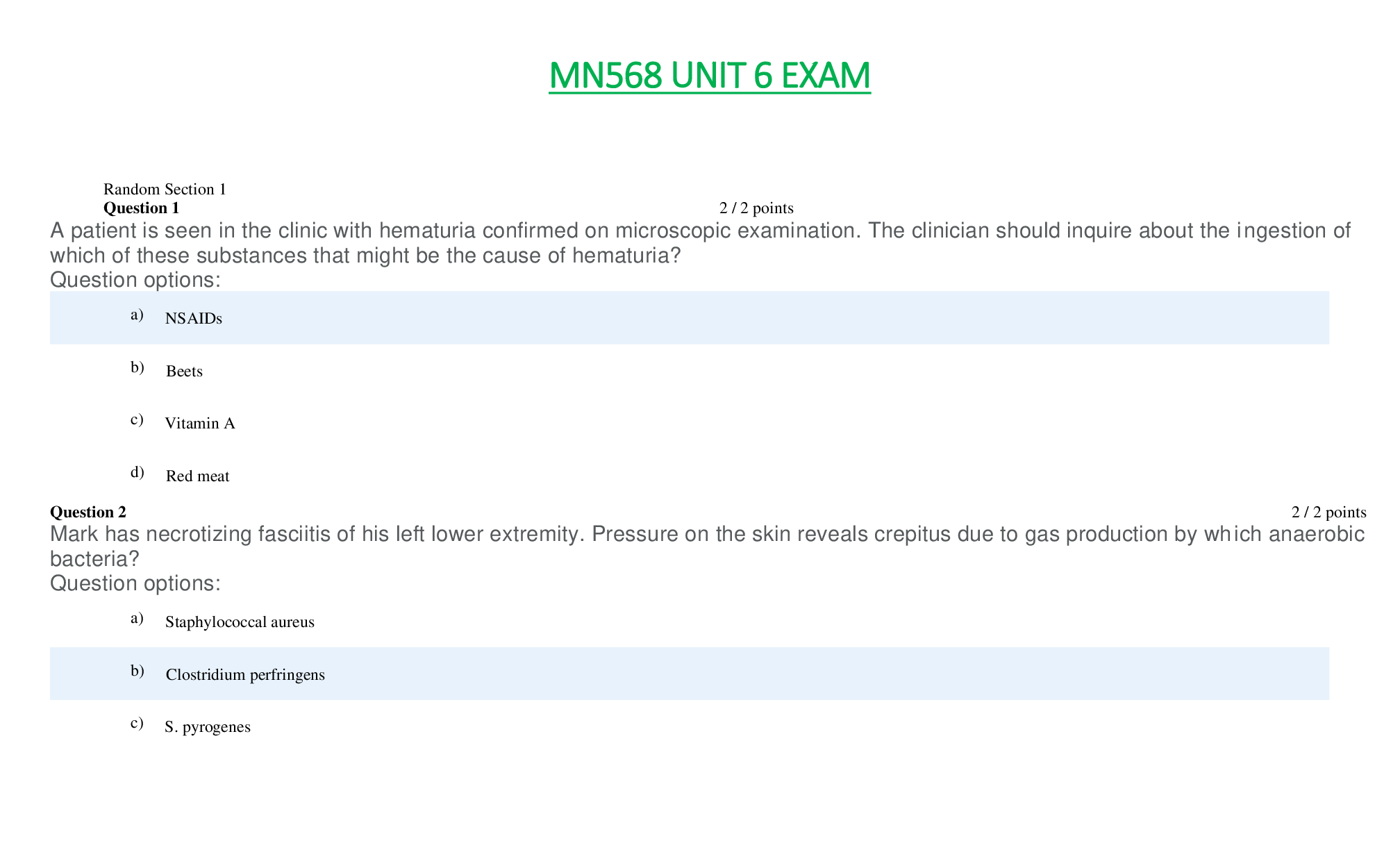
Reviews( 0 )
Document information
Connected school, study & course
About the document
Uploaded On
Dec 03, 2020
Number of pages
22
Written in
Additional information
This document has been written for:
Uploaded
Dec 03, 2020
Downloads
0
Views
30

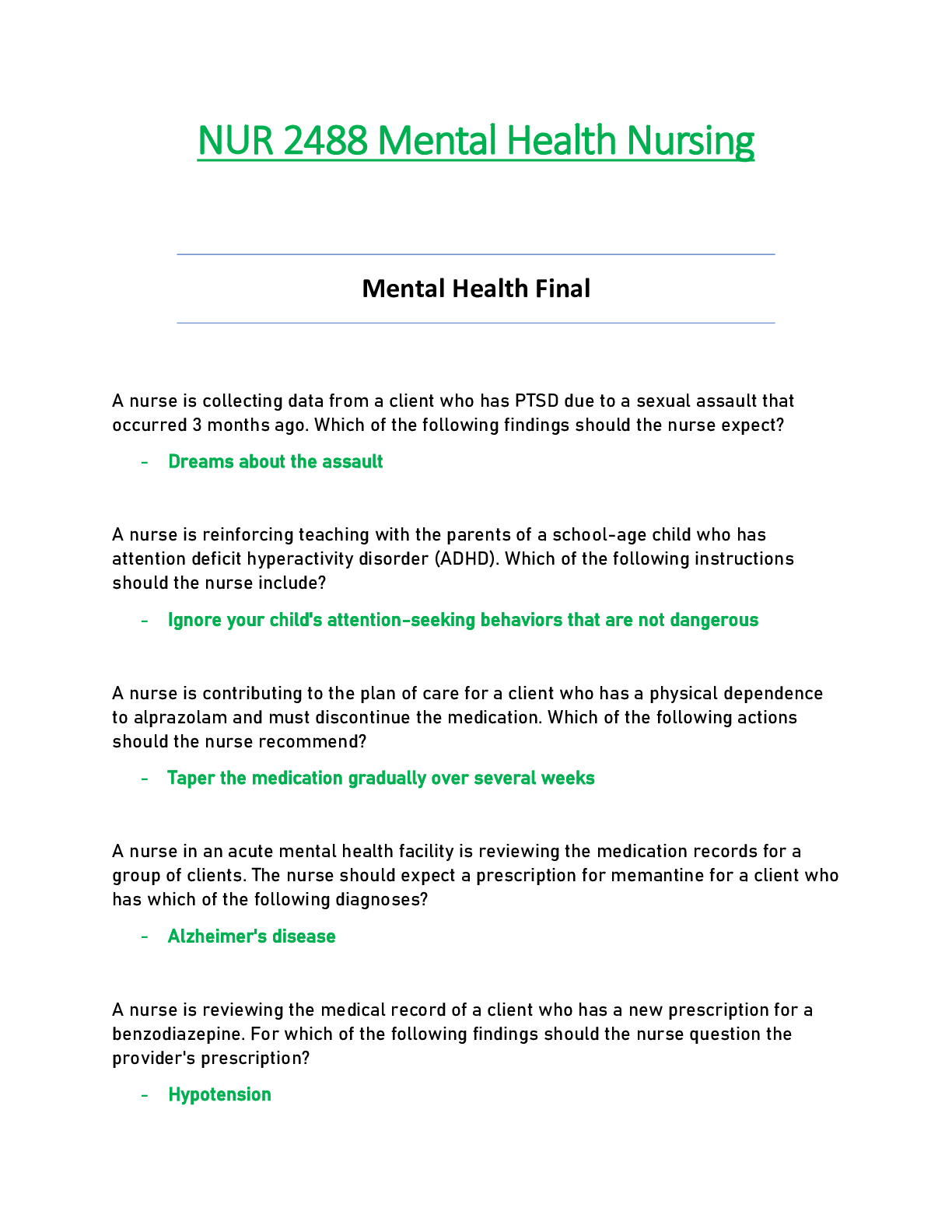
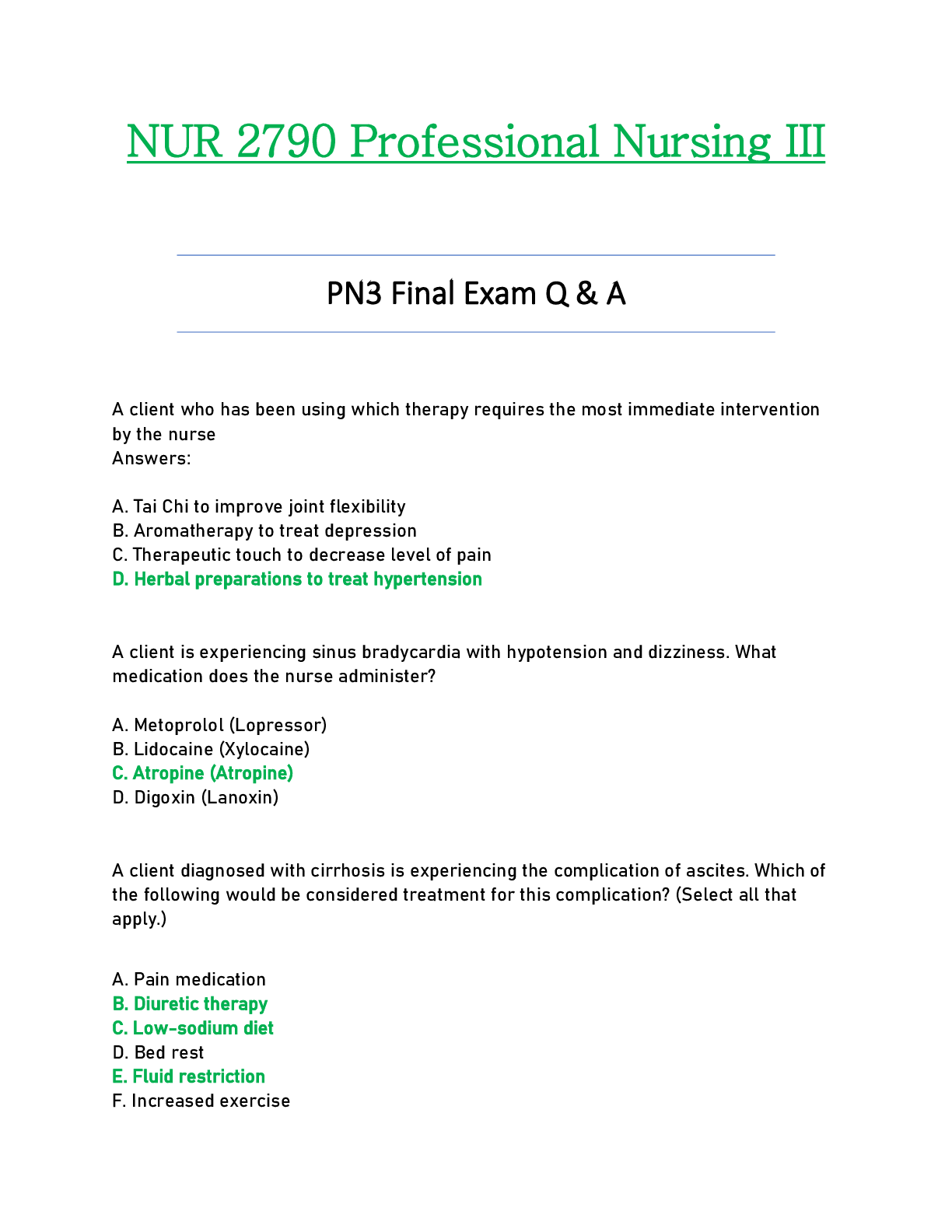
.png)
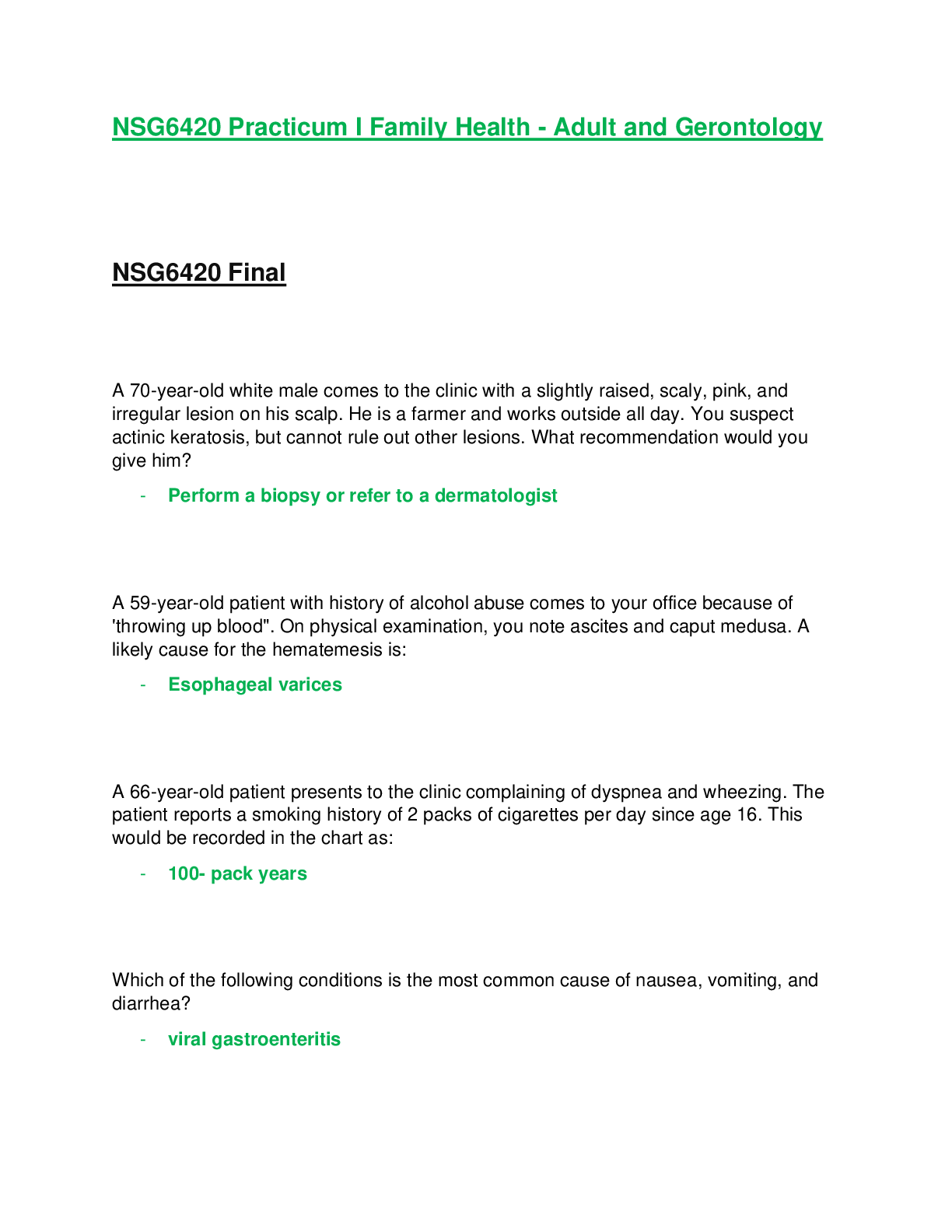
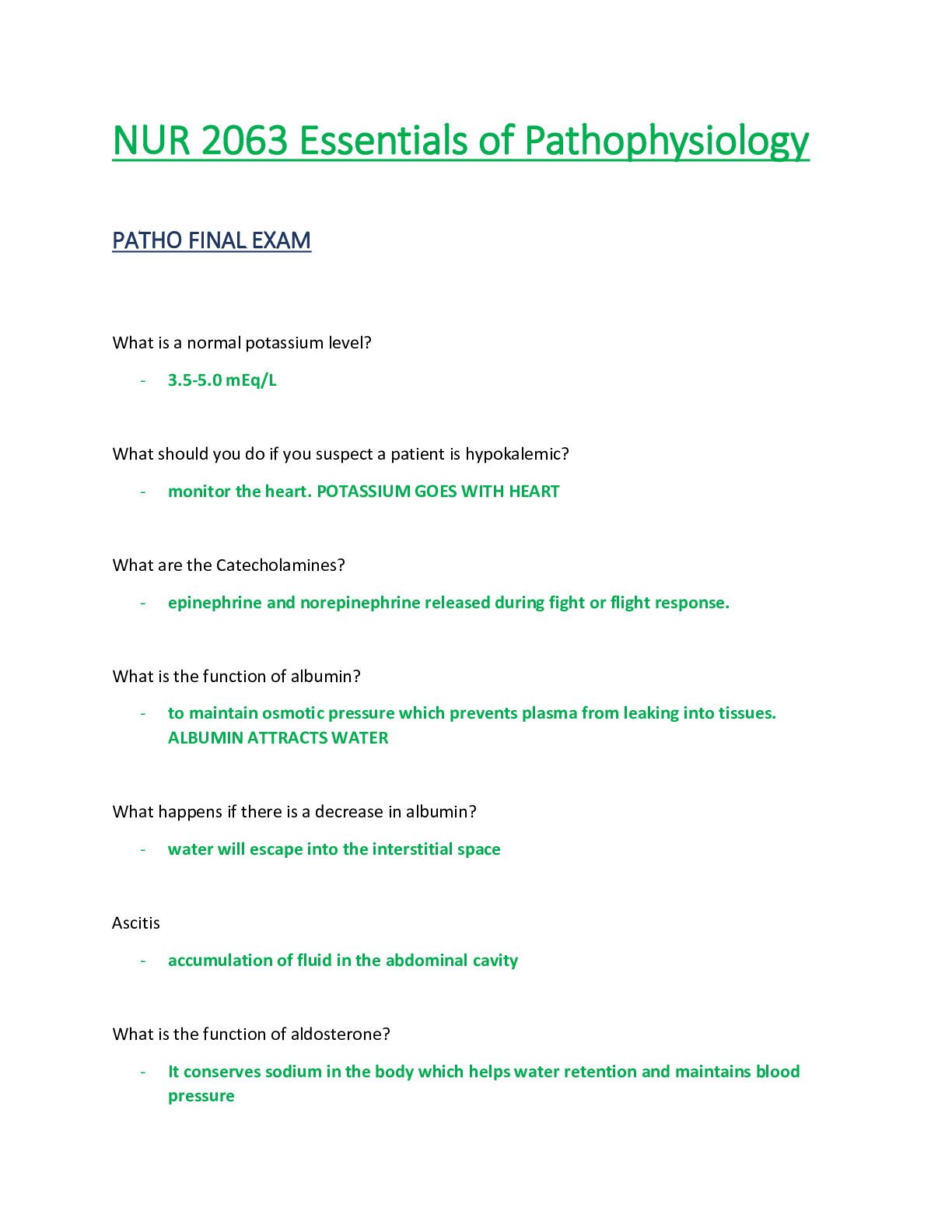

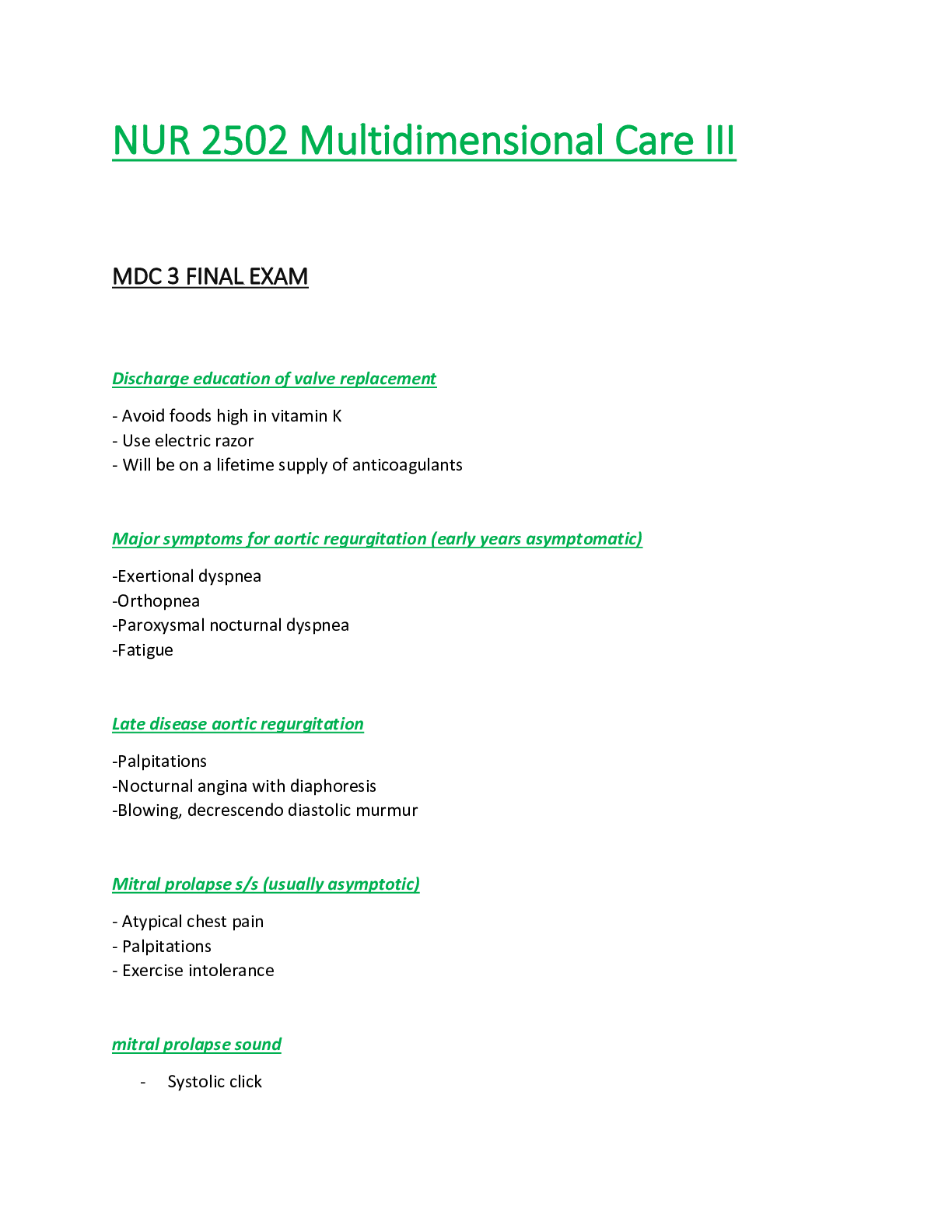
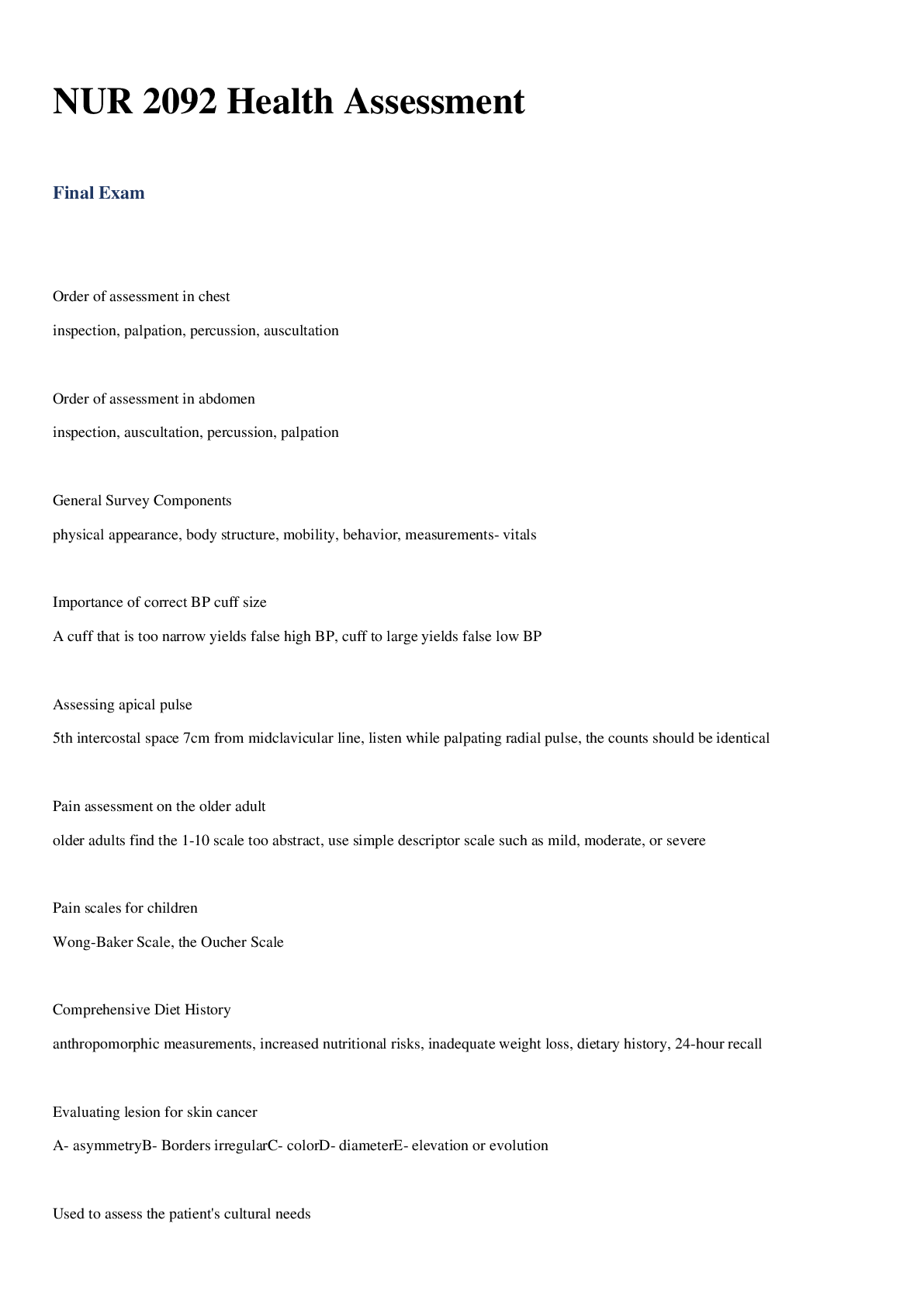
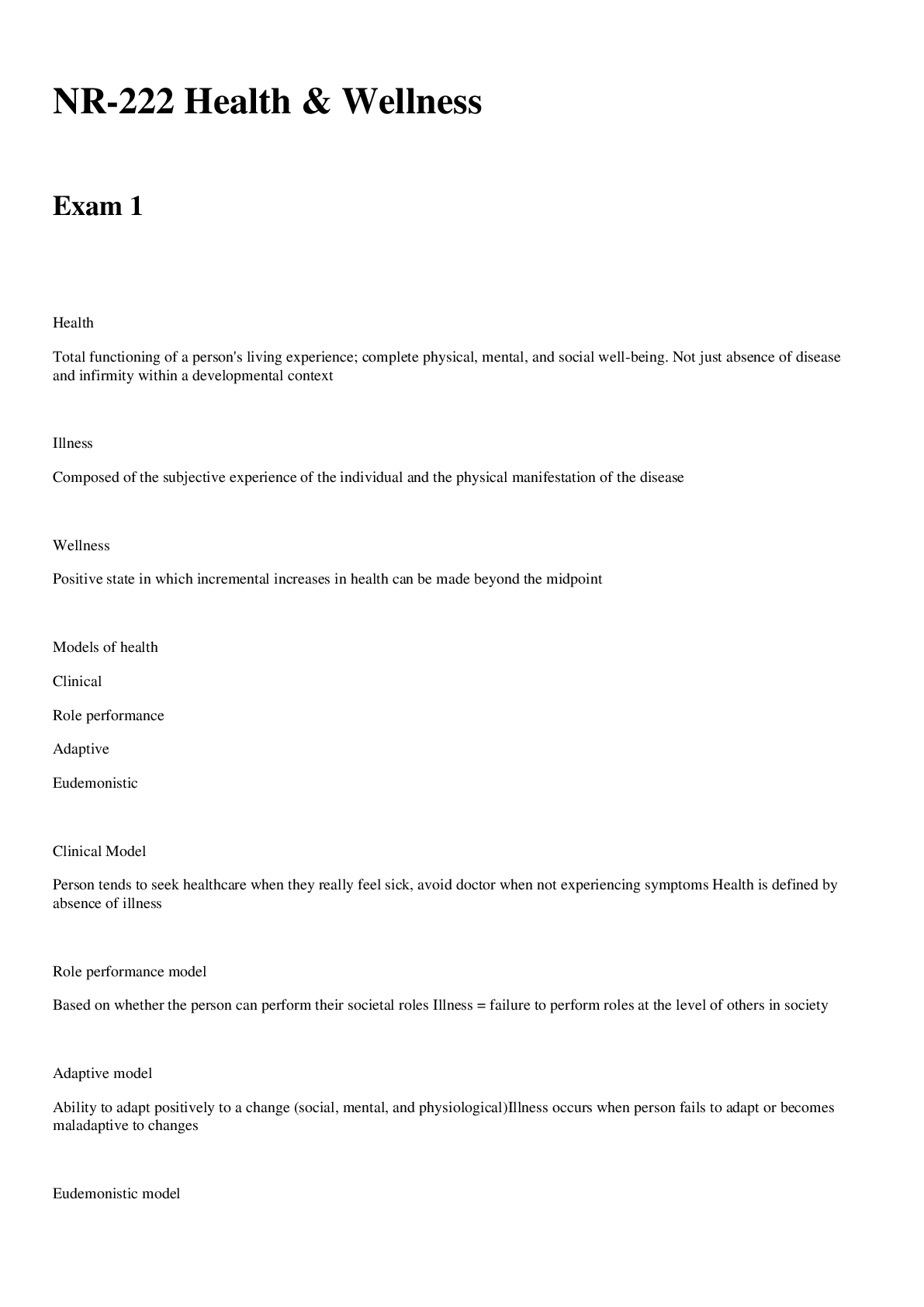
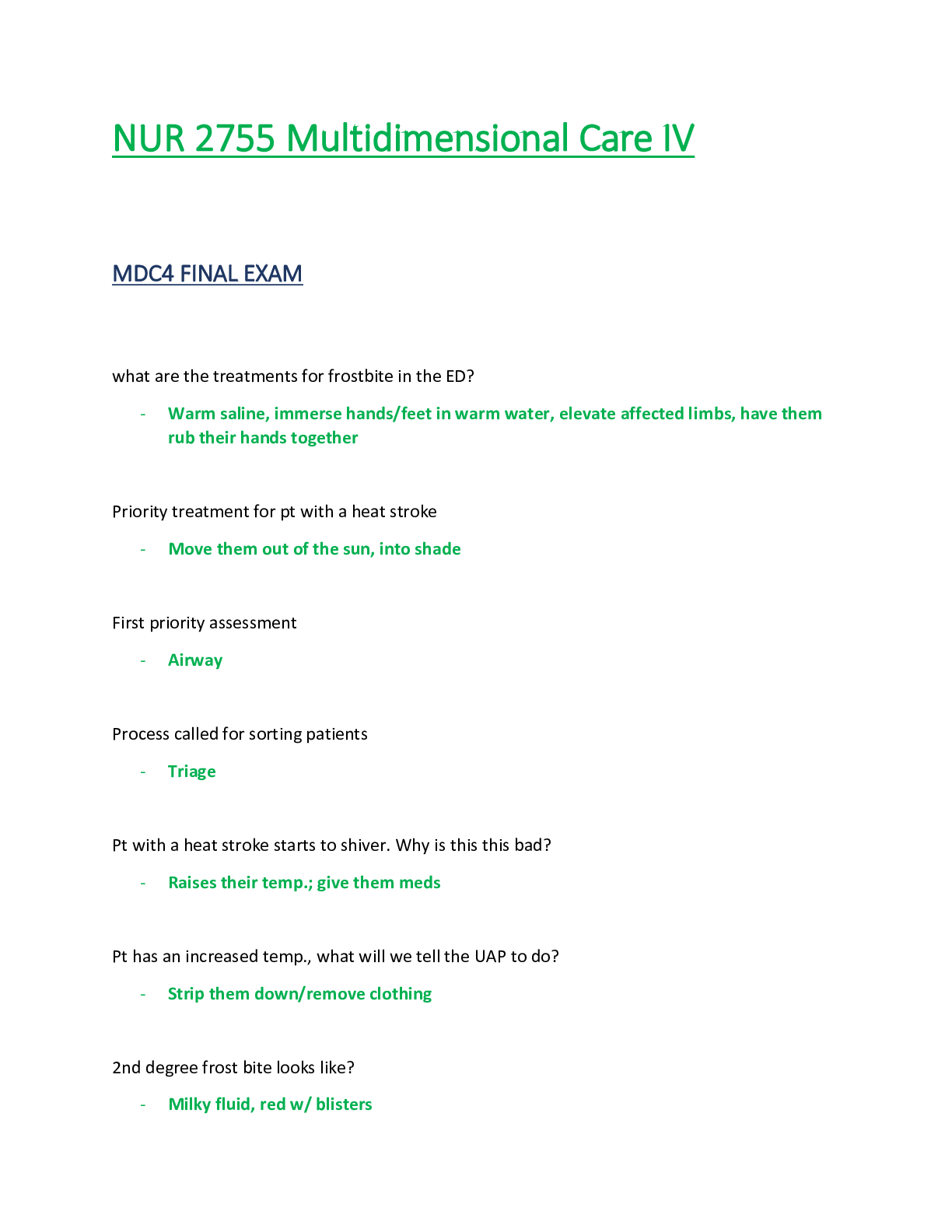
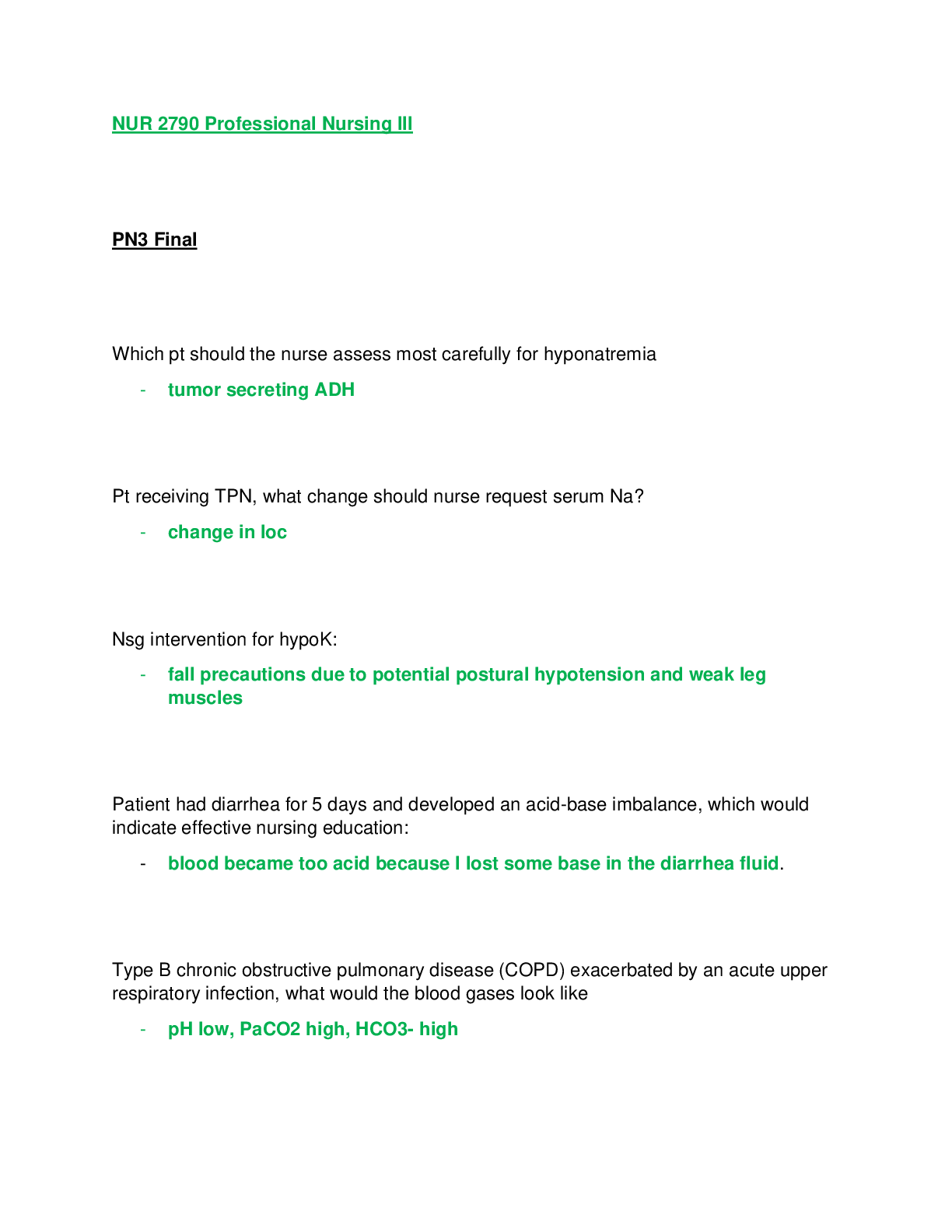
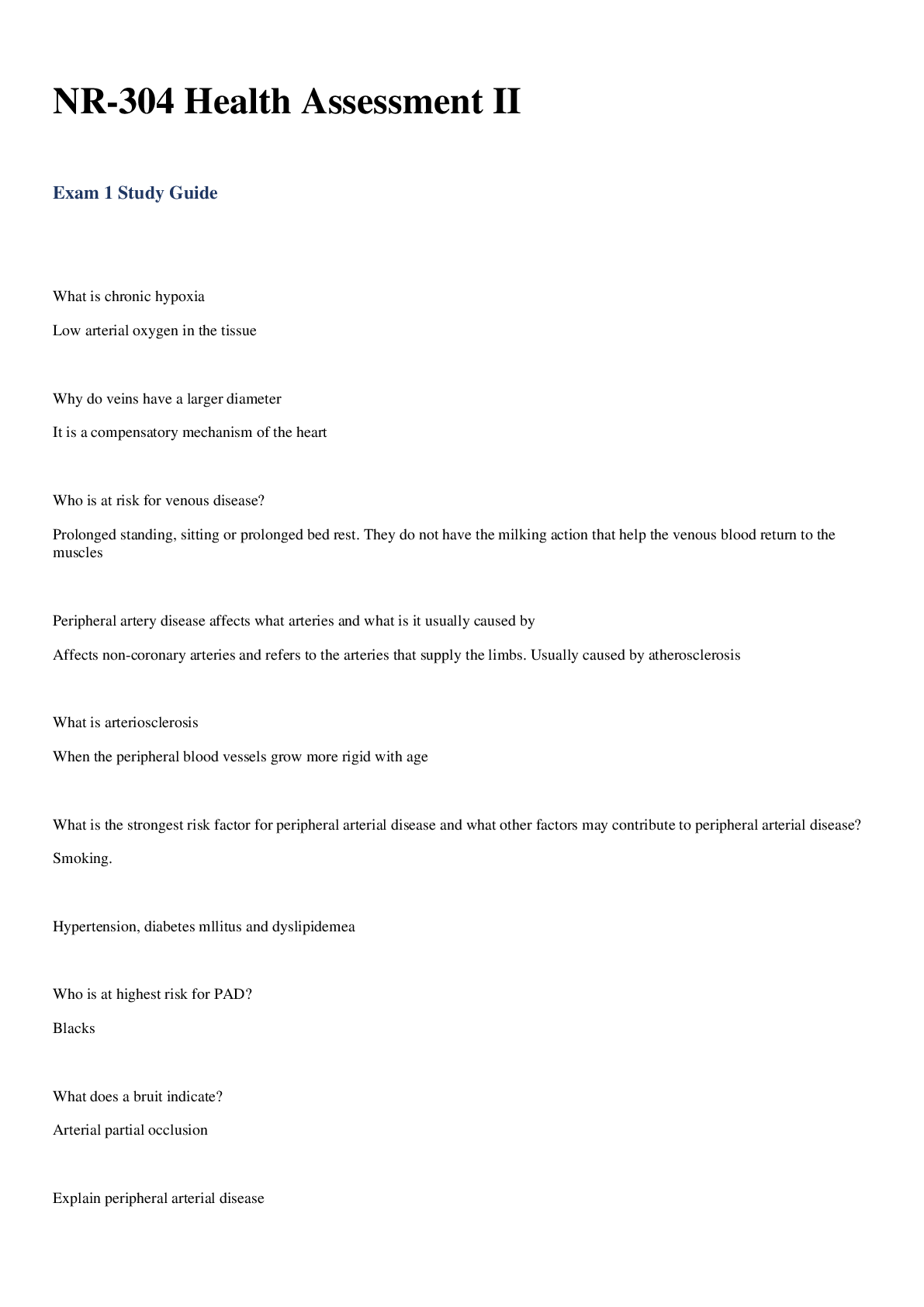

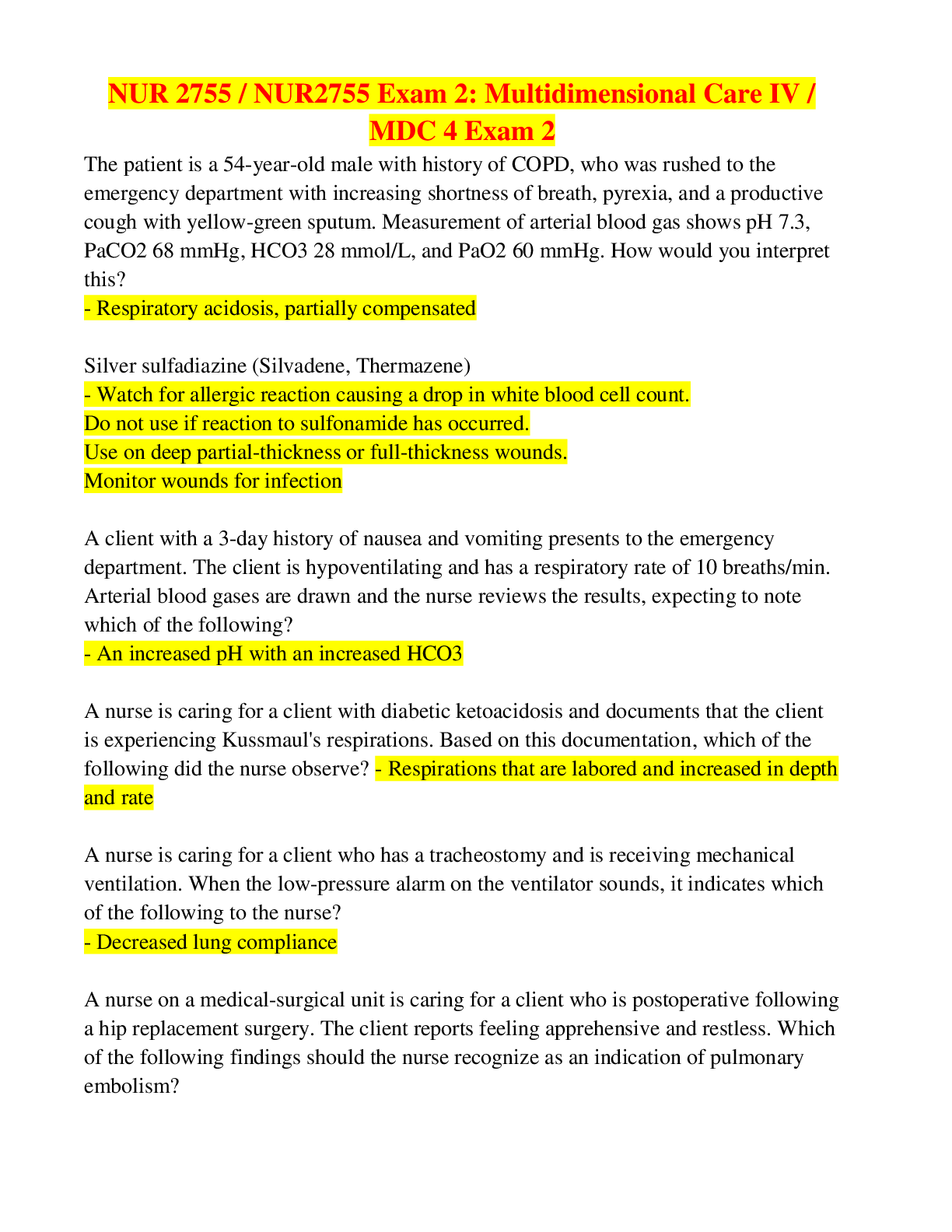
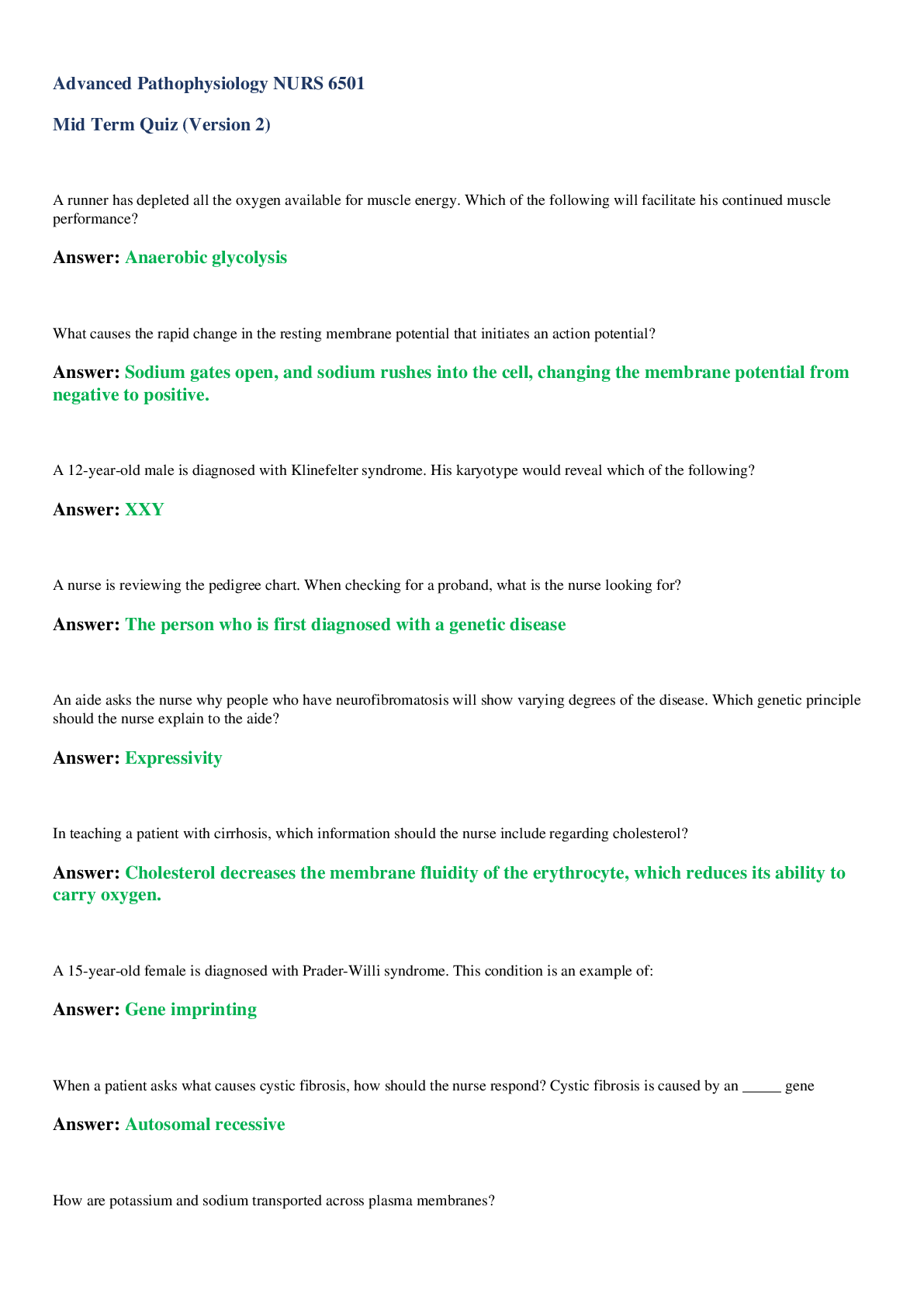
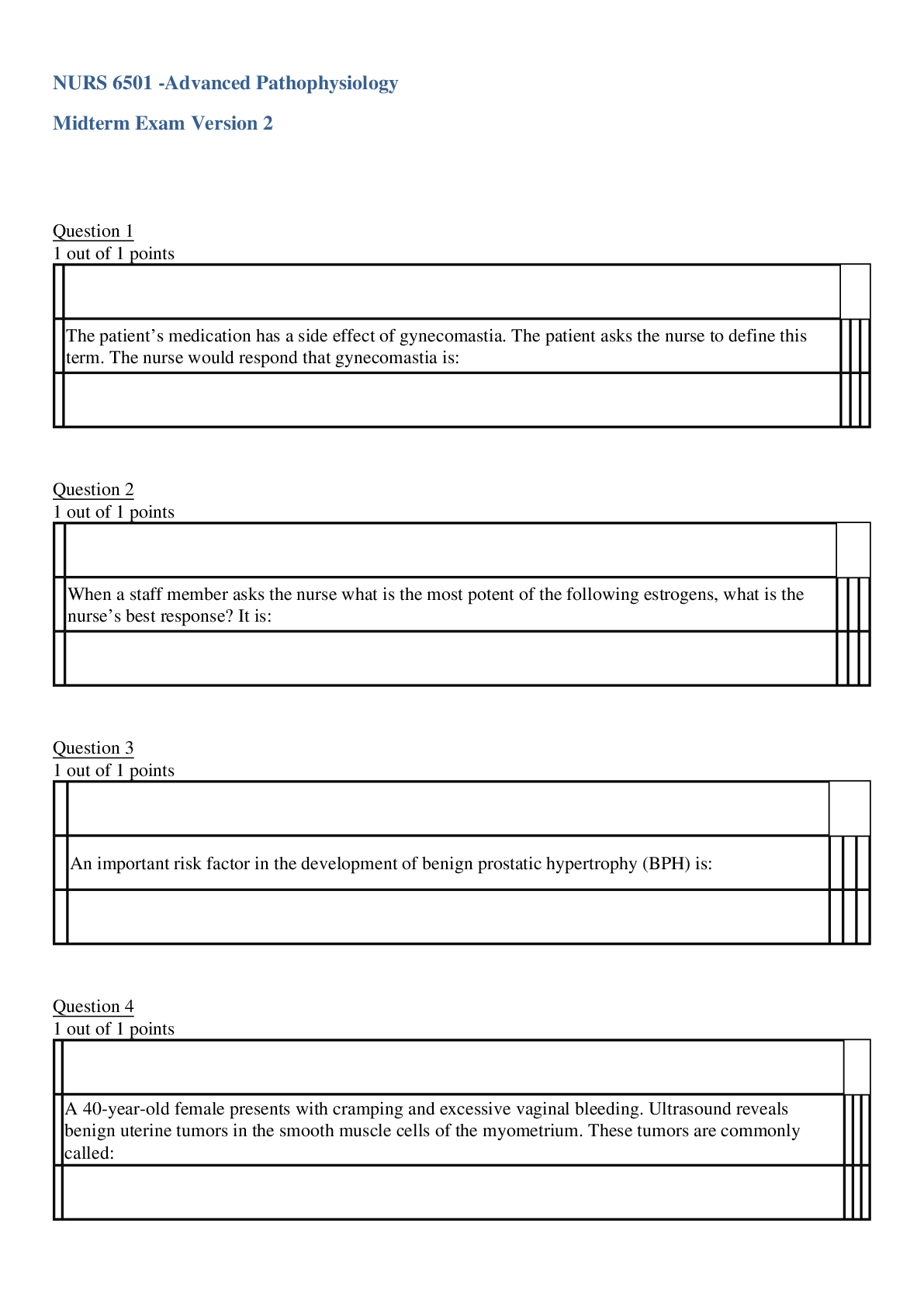
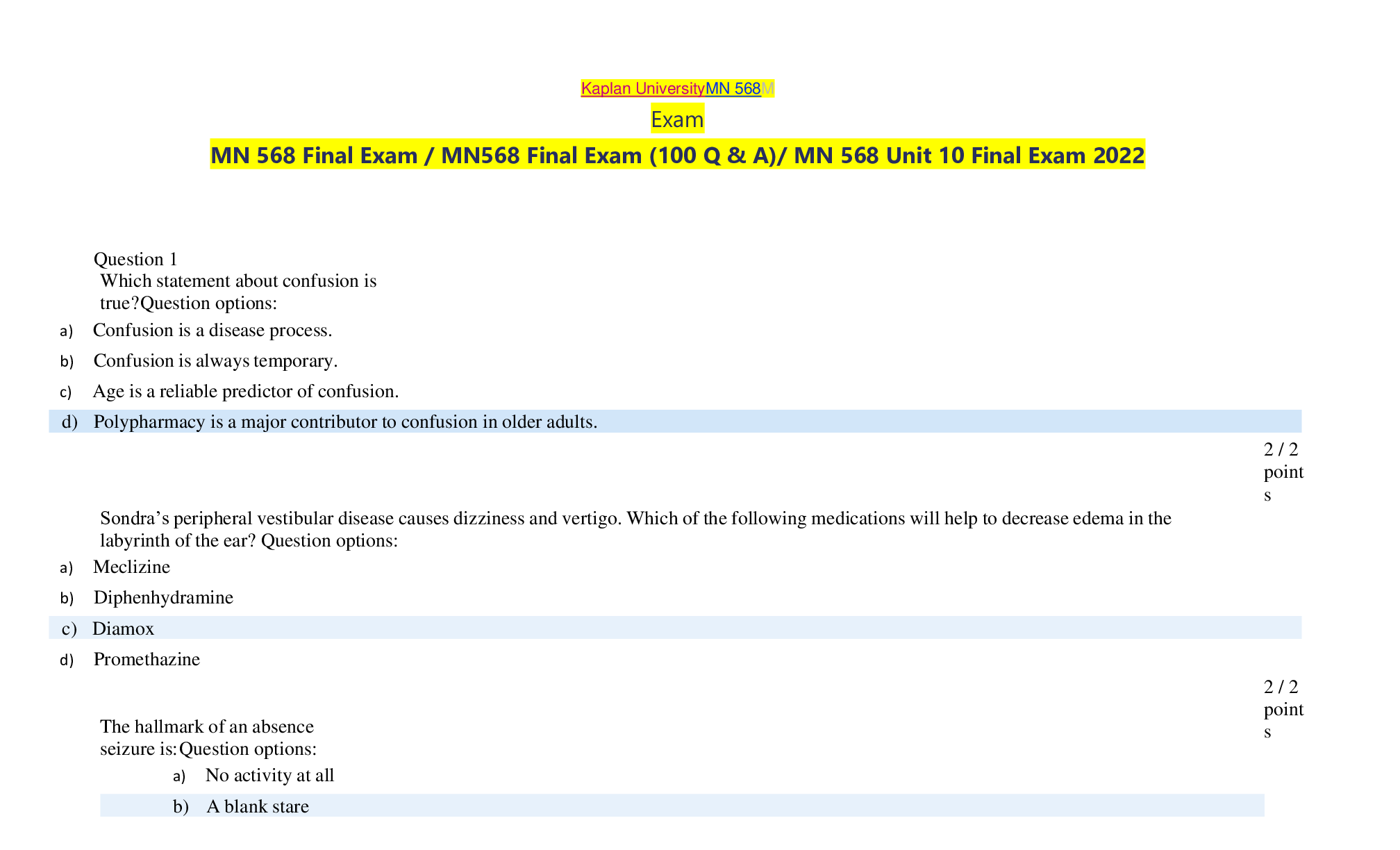
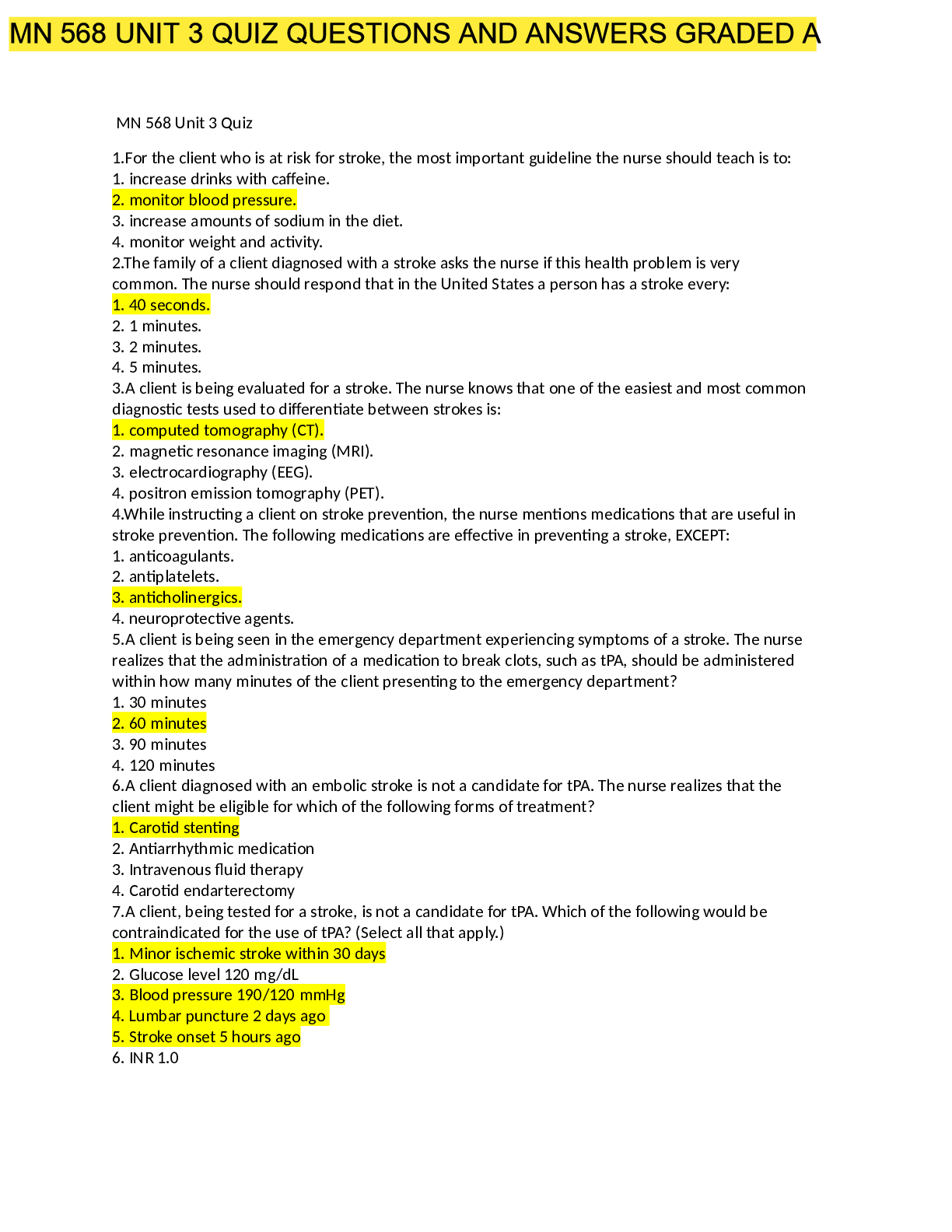

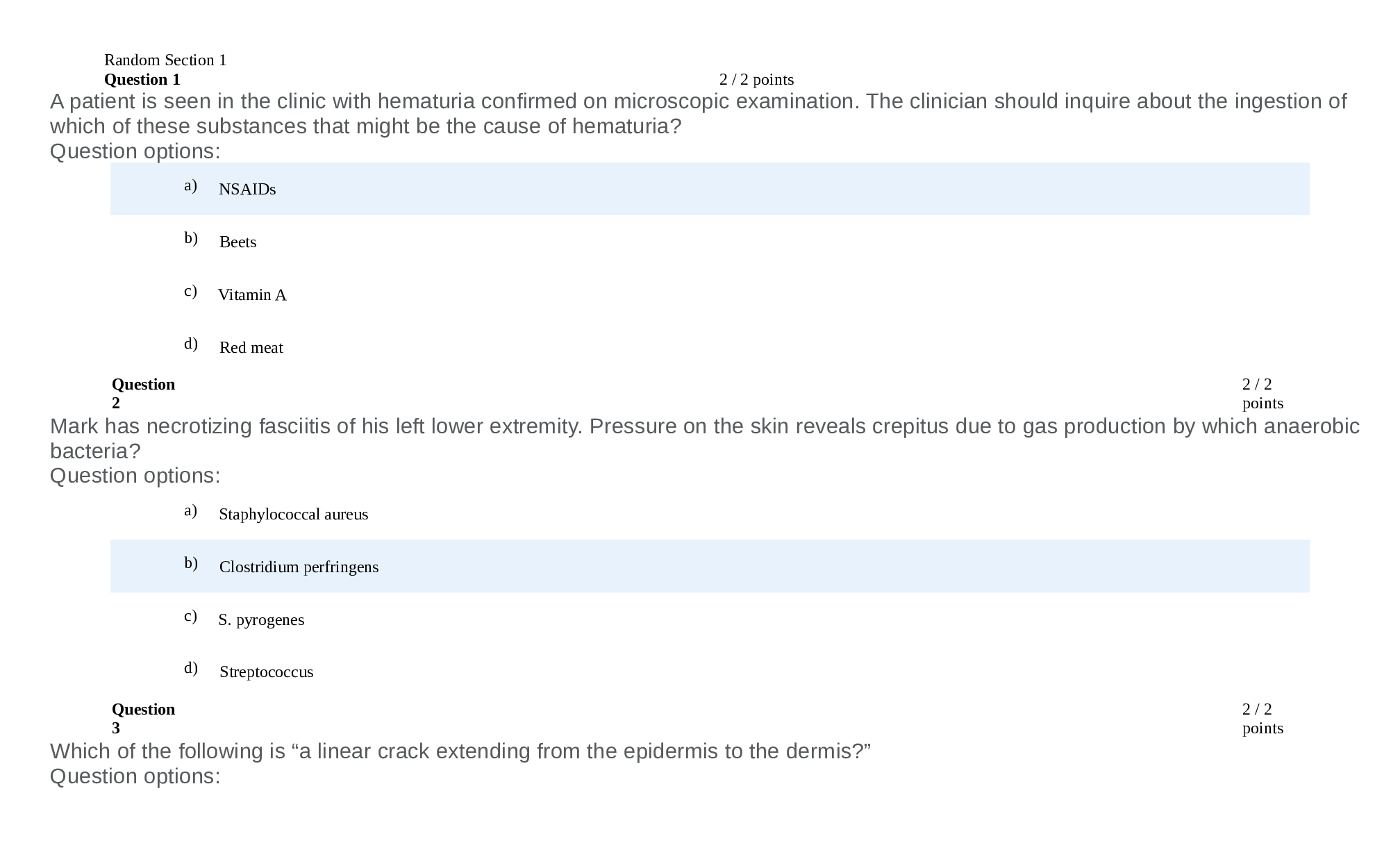

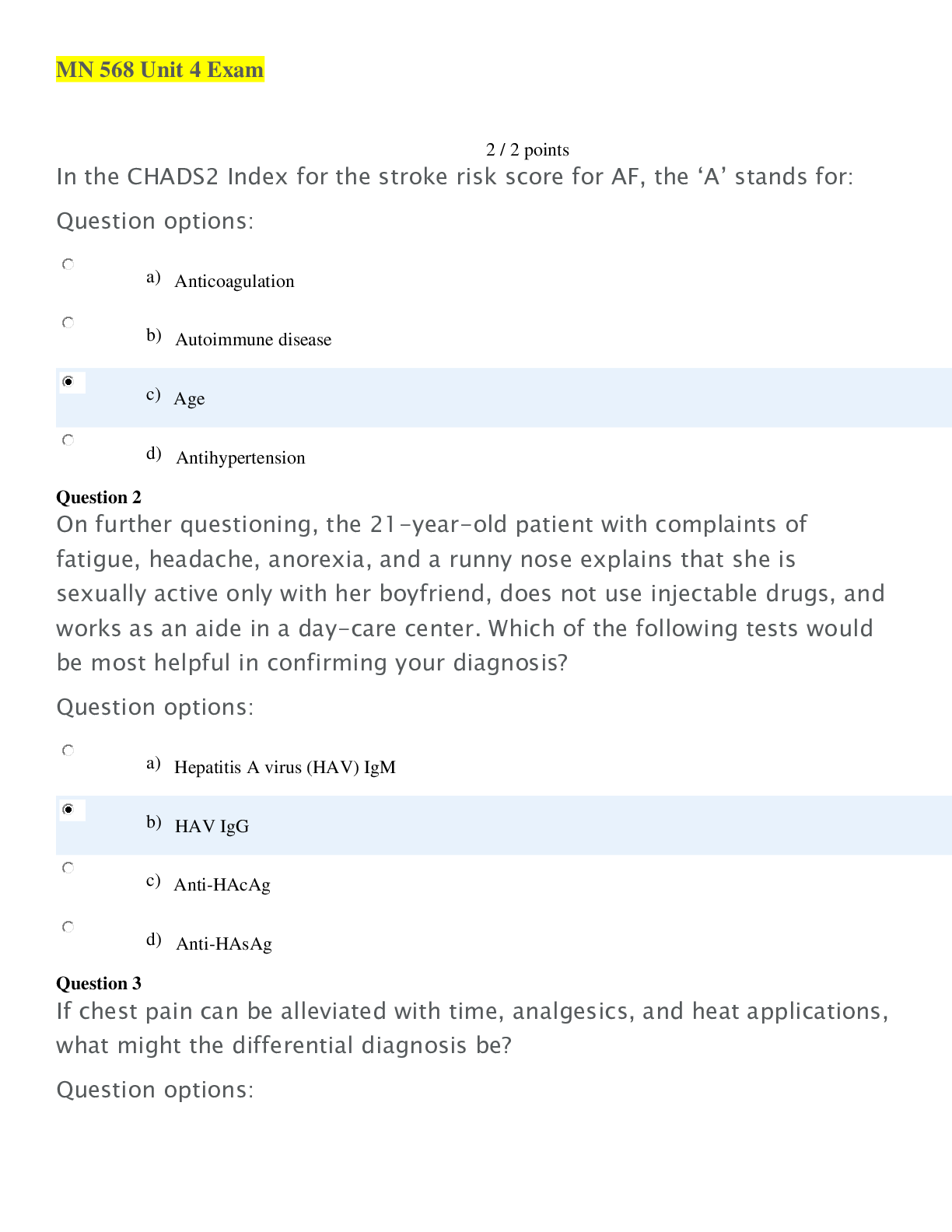

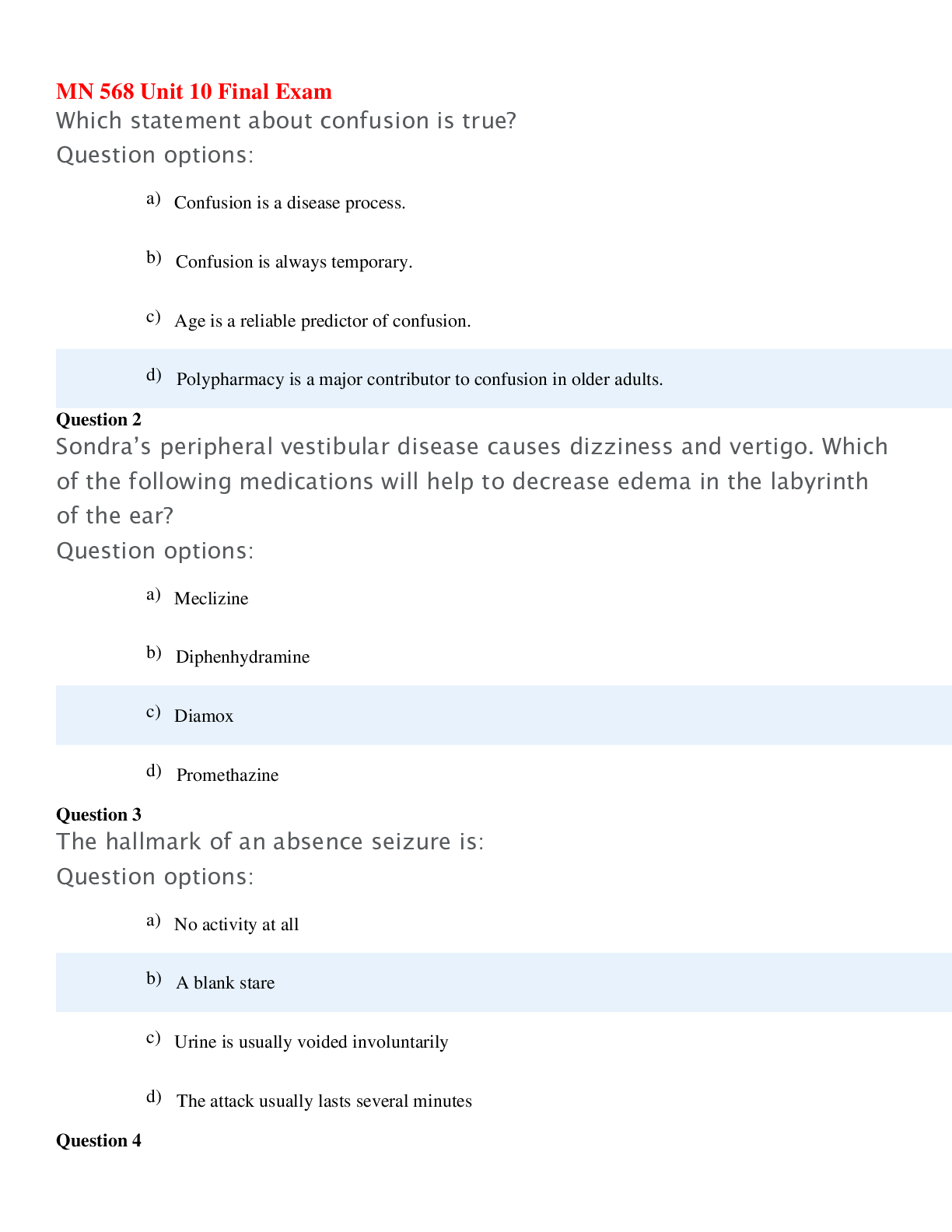


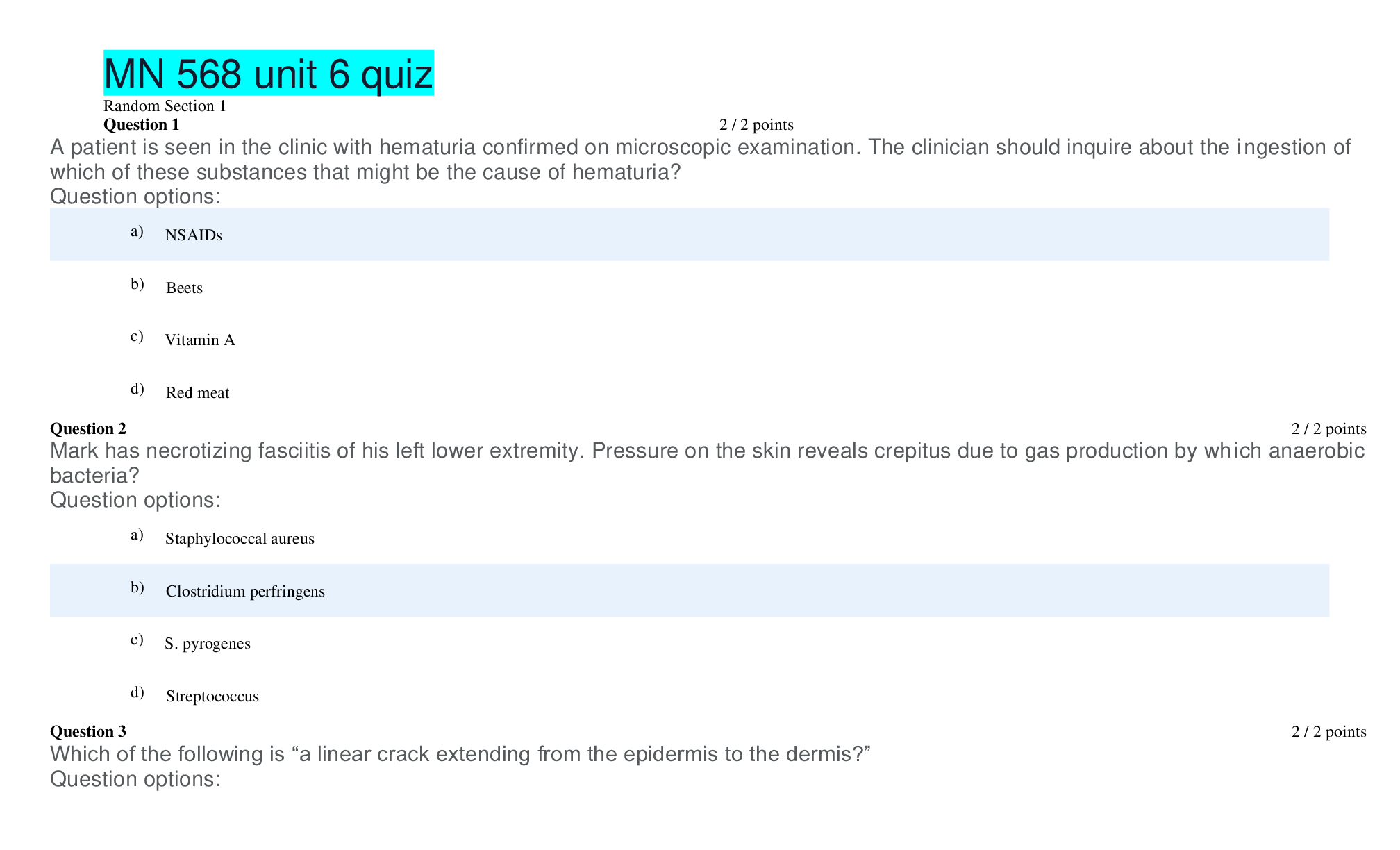

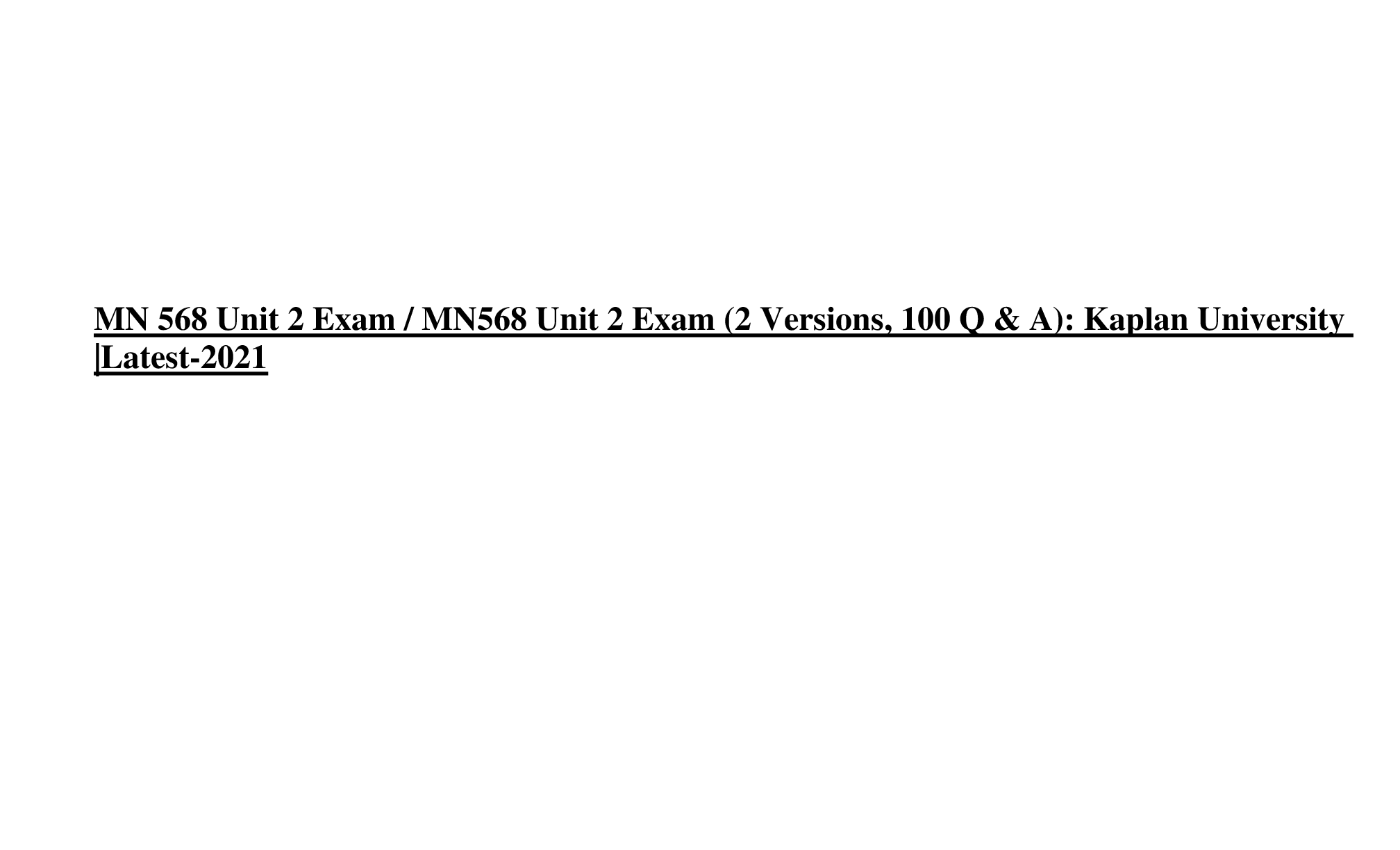
 Kaplan University Latest-2021, 100% Correct Q & A.png)
